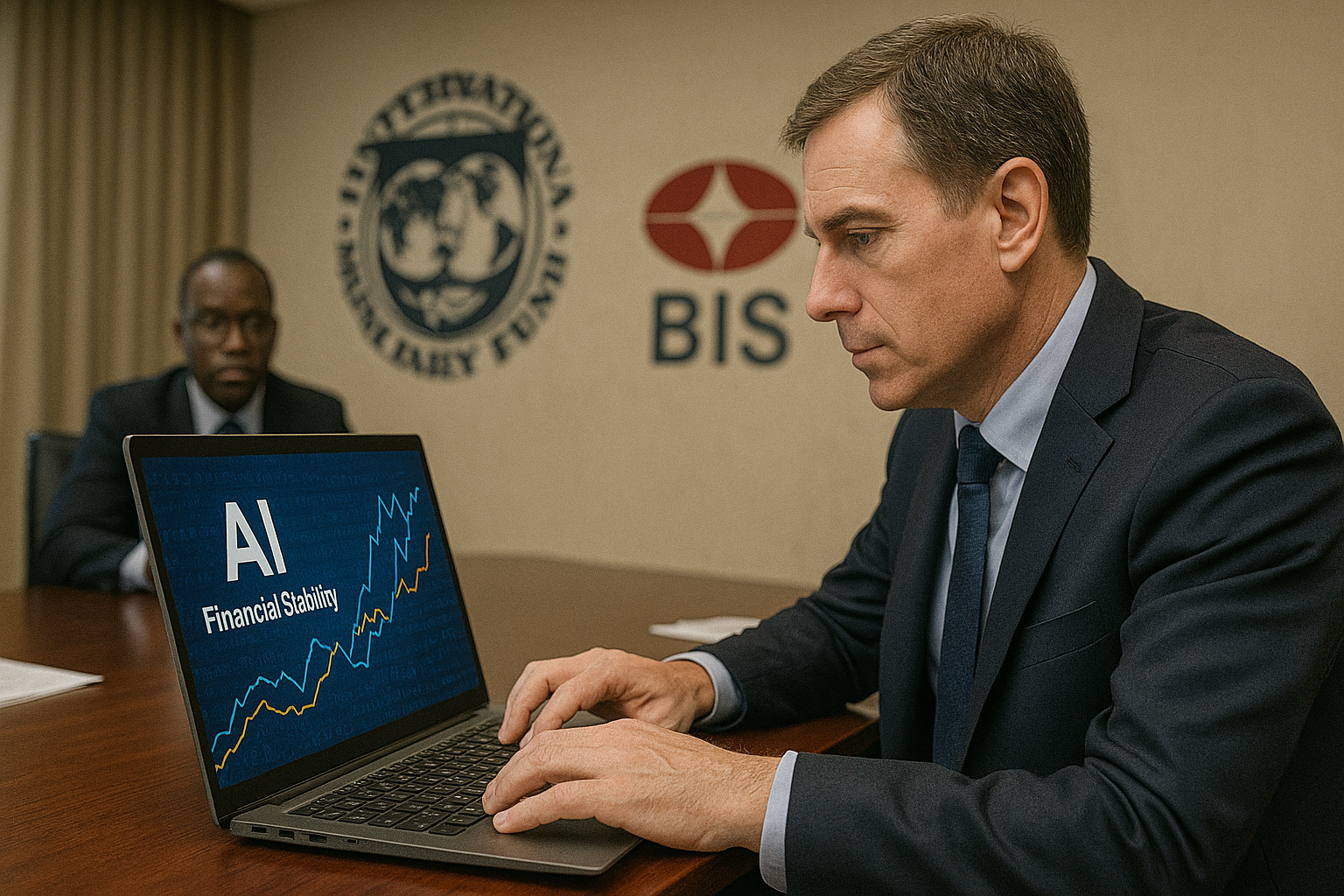Harnessing AI for Financial Stability: IMF and BIS Lead the Supervisory Revolution
The IMF and BIS working paper outlines how financial regulators can harness artificial intelligence to strengthen oversight, improve risk detection, and modernize supervision through ethical, transparent, and data-driven frameworks. It urges global cooperation to prevent a digital divide in regulation and to ensure AI enhances, not replaces human judgment.

The IMF Working Paper authored by Parma Bains, Gabriela Conde, Rangachary Ravikumar, and Ebru Sonbul Iskender from the International Monetary Fund (IMF) and the Bank for International Settlements (BIS), lays out a compelling vision for how artificial intelligence can transform the way financial supervision is conducted worldwide. Blending analytical rigor with practical insights, the paper argues that AI is no longer a futuristic ambition but a necessity for regulators seeking to manage complex, data-heavy financial systems in an era of digital acceleration.
The Push Toward Intelligent Supervision
The study opens with a sweeping overview of how technological disruption is reshaping the financial landscape. The authors note that over 160 supervisory authorities across more than 100 countries have already adopted some form of SupTech (supervisory technology). Yet, disparities remain stark; advanced regulators like the Bank of England and the European Central Bank have made strides in using AI for crisis forecasting and compliance automation, while many developing economies lag due to fragmented data and outdated systems. The report emphasizes that AI can drastically improve risk detection, early warning systems, and anti-money-laundering monitoring. But it cautions that adoption must be strategic and transparent, anchored in institutional mandates rather than driven by hype.
The authors cite examples such as the Bank of Thailand, which uses natural language processing to analyze board meeting minutes for compliance clues, and the European Central Bank, which employs AI to streamline licensing reviews. These applications show how AI can free supervisors from routine tasks, allowing them to focus on policy decisions. Still, ethical dilemmas, bias, explainability, and accountability demand careful attention.
Governance, Ethics, and the D.A.T.A. Framework
A central theme of the paper is governance, the cornerstone of responsible AI use. The authors argue that strong AI governance frameworks are essential to ensure accountability, fairness, and trust. They propose a four-pillar model encompassing clear structures, human oversight, operational resilience, and transparency. Human judgment, they insist, must remain at the heart of decision-making.
The report identifies data management as the “bedrock of AI success.” Poor-quality or biased data can skew models and undermine regulatory credibility. The D.A.T.A. framework, Data, Autonomy, Technology, and Accountability, is presented as a diagnostic tool to measure readiness for AI adoption. Each “yes” answer within this framework indicates a stronger foundation for AI success. By embedding such structures, financial supervisors can mitigate risks while accelerating innovation.
Agile Thinking and the Power of MLOps
Traditional “Waterfall” project management, the report contends, is ill-suited for AI’s dynamic nature. Instead, it advocates for Agile methodologies, short, iterative development sprints with constant feedback loops that encourage flexibility. The paper also introduces MLOps (machine learning operations), a fusion of software development and operations practices that automates model training, deployment, and monitoring. MLOps helps ensure that supervisory AI systems evolve alongside shifting market conditions.
The IMF and BIS experts illustrate how combining Agile thinking with MLOps can help regulators respond faster to emerging risks, build scalable systems, and foster cross-team collaboration. This dual approach transforms AI projects from one-off experiments into sustainable, continuously improving ecosystems.
People at the Core of the AI Transition
While technology is the enabler, the report makes clear that human capital is the decisive factor. An ideal AI project team, it explains, must include data scientists, software engineers, economists, and legal experts under a single project manager who bridges technical and policy domains. For agencies with limited resources, the paper recommends starting with a lean team, typically a business owner, data scientist, and software engineer, and scaling as capabilities grow.
The authors adapt the CRISP-DM (Cross Industry Standard Process for Data Mining) framework to supervisory contexts, mapping six iterative phases: project foundation, data understanding, data preparation, modeling, evaluation, and deployment. Each phase demands transparency, documentation, and alignment with policy goals. For instance, the evaluation phase requires not only statistical accuracy but also ethical checks for bias and explainability. Once deployed, AI systems must undergo continuous monitoring to detect “model drift,” ensuring decisions remain valid as financial conditions evolve.
A diagram in the report outlines a technological infrastructure for AI-driven supervision, linking data pipelines, machine-learning platforms, and analytics dashboards into a cohesive ecosystem. This architecture, the authors note, enables regulators to build trust and agility without compromising security or accountability.
Closing the Gap: From Innovation to Inclusion
In its conclusion, the report captures both the promise and the peril of AI in supervision. Artificial intelligence, it argues, can empower regulators to convert vast data into actionable insights, foresee risks, and improve transparency. But it warns that if technological advances remain concentrated among a few well-resourced agencies, a new digital divide in financial oversight may emerge, threatening global stability. The IMF and BIS researchers call for international collaboration, knowledge exchange, and capacity-building to ensure that all jurisdictions can benefit from AI’s potential.
Ultimately, the paper envisions AI as a partner, not a replacement, a tool that amplifies human judgment, enhances efficiency, and supports a safer, more inclusive financial system. The message is clear: the future of financial supervision lies not in resisting change but in managing it wisely. By embedding ethics, transparency, and human insight into the core of AI systems, regulators can lead a transformation that safeguards stability while embracing innovation.
- FIRST PUBLISHED IN:
- Devdiscourse
ALSO READ
Zupee Studio Revolutionizes Mobile Entertainment with Microdramas
Currency Fluctuations Amid Global Political Uncertainty
UK Prime Minister Keir Starmer visits Yash Raj Films' office in Mumbai.
India's Innovation Renaissance: A Mindset Transformation
Turkey Condemns Israeli Intervention on Gaza Aid Flotilla










